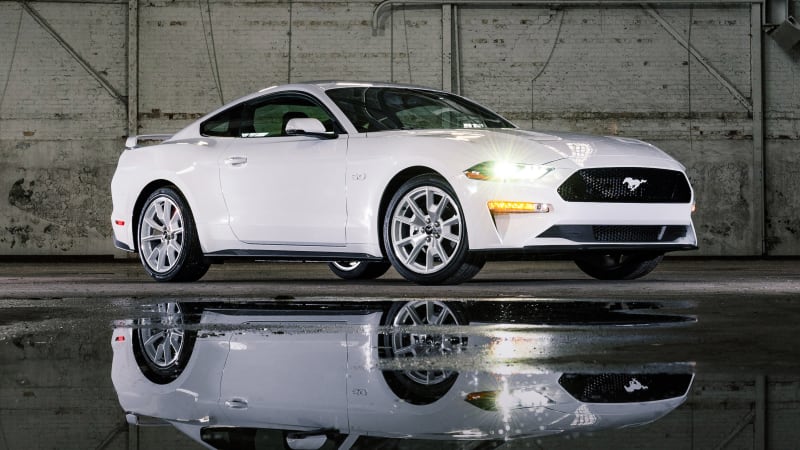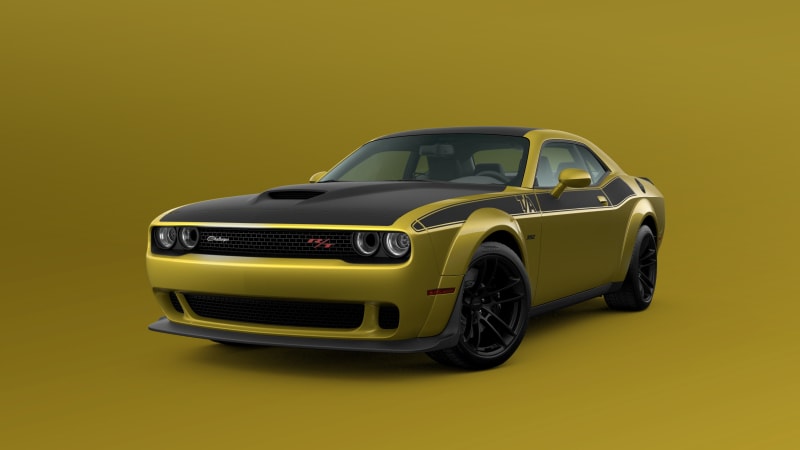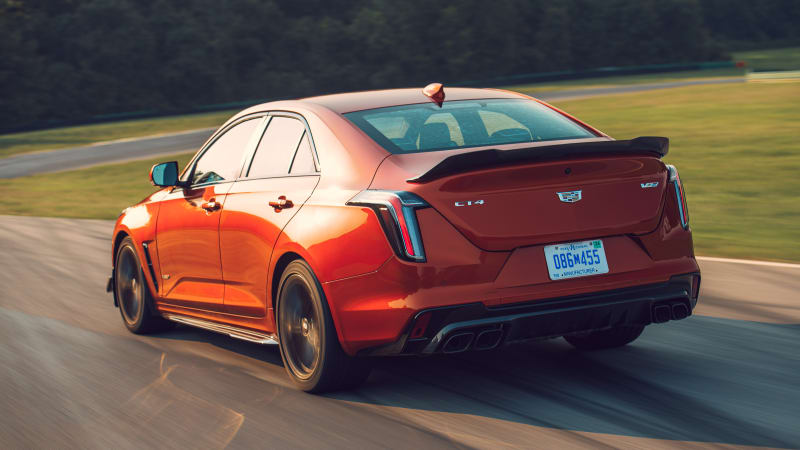Cars quite often miss the mark. Sometimes that means it was a critical failure. Sometimes that means it was a critical darling that didn’t translate into sales. Sometimes, worst of all, critics panned it and people avoided it. You know, the Azteks of the world. In this series, we will attempt to “fix” such cars by offering (mostly) constructive suggestions for correcting the issues that caused the car in question to irk car reviewers like ourselves and/or cause the buying public to go “meh.”
To begin, we could think of no better candidate than today’s sixth-generation Chevrolet Camaro.
Why the Camaro needs fixing
Since the beginning of 2019, Chevrolet has sold around 87,000 Camaros, according to sales data collected by Good Car Bad Car. By contrast, the Dodge Challenger, whose platform is eight years older and not available as a convertible, moved around 144,000 units. The Ford Mustang? About 169,000 of those were sold.
Anecdotally, as people who run an automotive enthusiast website, it sure doesn’t seem like the Camaro enjoys the same widespread enthusiasm as the Challenger, Mustang or any number of other fun cars. It just doesn’t come up much, and to be a touch more scientific, people just don’t research it online to the same degree.
This, despite the Camaro being widely considered the best pony car to drive, with handling in particular that puts the Ford and Dodge to shame. In fact, we once smoked a suitably equipped V8-powered Mustang GT around a track in a V6-powered Camaro 1LE. The V8-powered SS 1LE was just in a land of its own. In other words, the driving experience doesn’t seem like it’s part of the problem.
How we would fix the Camaro
Road Test Editor Zac Palmer: I have never been able to get over the complete lack of visibility in the Camaro. Sitting in the driver’s seat is like sitting in a mail deposit box with tiny entrance slits carved on every side.
In an effort to make an interesting Hot Wheels-like design, GM’s designers and engineers (for two generations) seem to have forgotten that somebody still has to sit in the driver’s seat and drive this thing on public roads. It’s simply a nightmare, the likes of which is only solved by opting for the convertible and driving around with the top down 100% of the time. In fact, the total lack of visibility is enough for me to completely write off the Camaro as a car I’d personally want to own. That sucks.
It sucks, because nearly everything else about the Camaro is brilliant. But I find very little joy in it all when it’s so difficult to see the road. I could partially forgive the Camaro for this brutal design choice if it were a supercar or hypercar, but it’s not. A Camaro could be your daily driver, so it has to be at least semi-livable — Ford shows it understands that with the Mustang.
Fixing this fatal flaw is impossible with the Camaro as it stands today. Increasing visibility isn’t like adding a few extra ponies or reducing a car’s tendency to understeer. No, my problem with the Camaro requires an entirely new Camaro with a new greenhouse, and that’s fine. This one’s nearing the end of its lifespan, so GM can take this constructive criticism into account for the next one.
Senior Editor James Riswick: The Camaro takes itself far too seriously. So much attention was put into its all-around performance capabilities, especially in regard to handling, viewing that as the definitive way to crush its competitors and prove that GM is the coolest kid on the block. That attention absolutely shows up in the way the car drives, as well as the amount of praise it receives. Chevy’s marketing efforts also lean into the Camaro’s all-around performance capability: it’s a serious, hardcore machine for serious, hardcore drivers.
The trouble is, there aren’t that many people who fall into that serious, hardcore niche, or who actually care about the Camaro’s segment-besting handling capabilities. Worse, there are a great many who will be turned off by the car having a such strong whiff of Monster energy drink about it. I know I do. The Mustang, by contrast, has a much wider appeal. Part of that comes down to its history of having wide appeal, but today’s Mustang (to Zac’s point) is indeed a much easier car to live with. The Dodge Challenger, meanwhile, doesn’t take itself seriously at all. It has cartoons on the fenders, comes in colors called Hellraisin and Gold Rush (see above right), and is far too enormous to even consider handling. At the same time, it’s shockingly practical.
Basically, the Camaro needs to widen its appeal if it’s to sell better. That definitely means a redesign as opposed to just a styling refresh, both for aesthetics and for repackaging. It means diversifying the lineup with subtrims and special editions that could appeal to a wider array of buyers. Marketing efforts would come into play there, too. Dialing back the machismo would certainly help for all of the above. Finally, adding a new, totally different variant to an expanded Camaro sub-brand could help the cause. Maybe that’s a four-door version? Maybe it’s electric?
Associate Editor Byron Hurd: This shouldn’t be a tough question for me. I’ve owned both of the current Camaro’s direct competitors (a ’15 Mustang GT, which I purchased new, and a ’13 Challenger 392, CPO), so pony cars are definitely in my wheelhouse. Having driven the Camaro only a handful of times, I honestly never felt too strongly one way or the other about it, but I’m a huge fan of its chassis (obviously) and basically every reasonably decent V8 ever built, so the Camaro should have been a home run for me.
So why wasn’t it? Honestly, it’s a bit too compromised. I put most of the miles on my cars doing long highway cruises, whether it be to visit friends and family or just for the sake of doing some driving. If I can’t kick back with the cruise control on and sit comfortably for hours at a stretch, then I’m not going to be happy. The Camaro’s cramped, awkwardly shaped driver footwell makes that an unnecessary challenge. Throw in the fact that its trunk opening is smaller than my 30-year-old Miata’s despite a footprint that is significantly bigger, and it quickly becomes clear that the Camaro is large in ways that do it no favors either dynamically or practically, and too small in many of the ways that count for quality of life.
How would I fix it? Well, I’d move the firewall forward, add two doors, raise the greenhouse and slap a Cadillac badge on it. Yeah, kinda like that. That may seem flippant, and sure, the Camaro SS should run circles around a standard CT5-V and the ZL1 would likewise give a Blackwing fits, but to Riswick’s point above, being the best at the track doesn’t mean squat in the context of your day-to-day. There’s a reason why stripped-down, track-focused models top the performance hierarchy of most sports cars despite offering less equipment. The volumes are too low to justify an affordable price tag because the overwhelming majority of real-world buyers aren’t even remotely interested.
Sex appeal and everyday livability count for a lot with the general buying public, and to put it bluntly, the Camaro lacks both. It doesn’t need to be a Challenger, but it’s in desperate need of a healthy dose of charisma. As it sits, the Camaro is that guy’s car. You know that guy – the one who always reminds you how many comparison tests “his” car has won, or how much quicker it was than your car around VIR six years ago. Oh, you didn’t ask? Nah, man. We never do. Go sit with Volkswagen GTI guy. You’ll have lots to talk about.
Consumer Editor Jeremy Korzeniewski: I don’t think GM can “fix” the Camaro in its current form. That’s partly because it’s not broken, but also because of the issue that James raised: the Camaro puts racetrack performance above all other considerations. I just don’t think that’s what most buyers want in their muscle or pony cars, which is reflected in its lower sales figures. The Challenger is a better muscle car and daily driver, and the Mustang is better at bridging the gap between performance and practicality. But on a track, the Camaro reigns supreme.
For what it’s worth (which is frankly not much), I think it’s laudable that General Motors decided to build an all-out track-day weapon. Like I said earlier, it’s not broken. But it’s because of the car’s narrow focus that it isn’t as popular with the buying public as its peers.
News Editor Joel Stocksdale: I’m a bit of an outlier here because I really like the Camaro as-is. That’s not to say I don’t see room to improve, though.
Number one on my list is just to improve the visibility. It really is rough trying to see out it. And this would go along with my other suggestion to redesign it. I think Chevy should give it a really forward-looking sports car design, a bit like it did with the wedge-shaped fourth-generation model. The current conservative update to the retro-design just doesn’t stand out anymore.
Finally, I’d like to see Chevy provide a little more support for hopping up the entry-level four-cylinder. Yes, they have the 1LE, but when you add that package, the car breaks $30,000. I think it would be better to offer parts a la carte as dealer accessories. Offer 1LE suspension parts, an engine tune and things like that that can be added later. Not everyone wants to wrap everything in a fat monthly payment.
Other than that, though, I like the Camaro currently. It’s a fantastic driving car in most any form.
Related Video:
.embed-container { position: relative; padding-bottom: 56.25%; height: 0; overflow: hidden; max-width: 100%; } .embed-container iframe, .embed-container object, .embed-container embed { position: absolute; top: 0; left: 0; width: 100%; height: 100%; }








